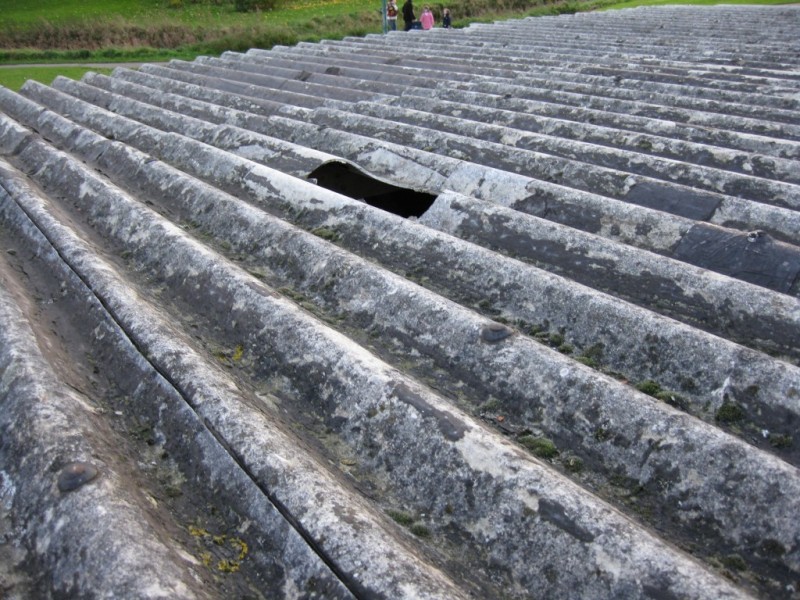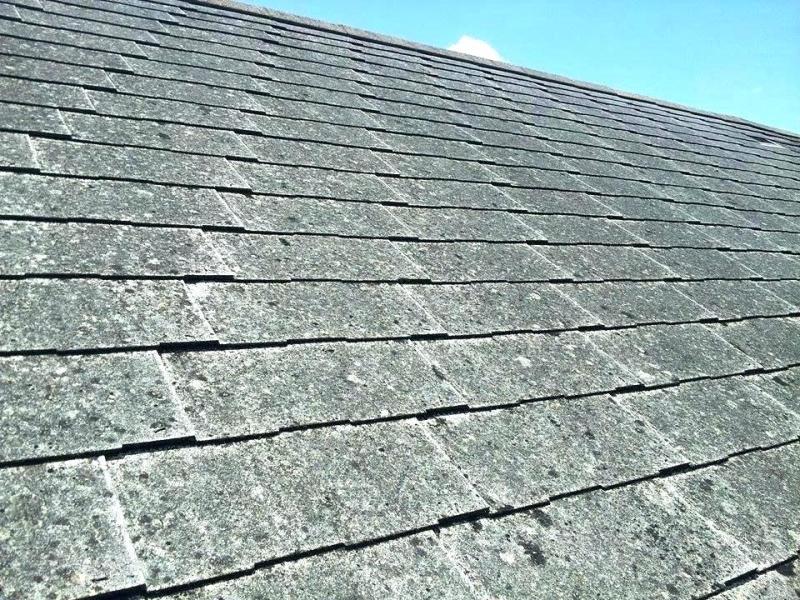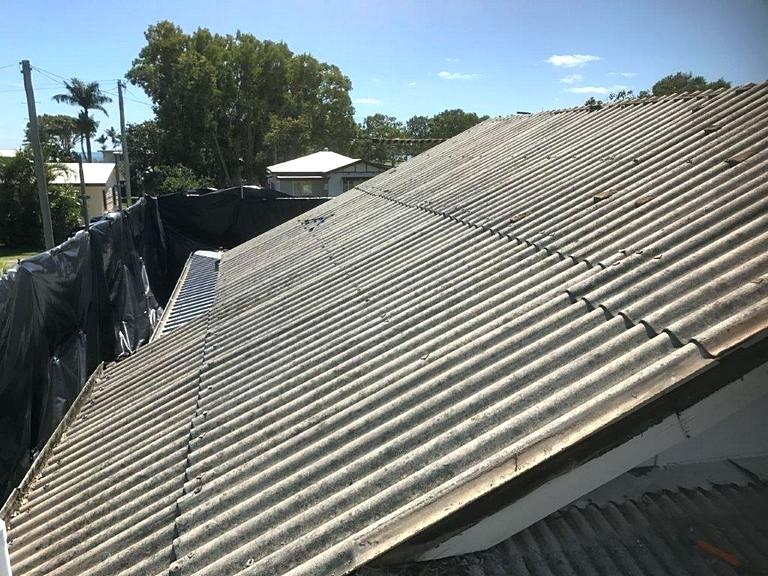Asbestos roofing shingles were once commonplace in the construction industry. Well-regarded for their low-cost, heat resistance and accessibility, asbestos roofing shingles were manufactured using a mix of hydraulic cement and asbestos fibres. Between 1950 and 1990, asbestos shingles became a popular way to deliver efficient and durable roofing shingles to the masses. Unlike other low-cost roofing solutions, asbestos shingles were not warped or distorted by extreme weather conditions.
In 2019, the detrimental effects of asbestos on the human respiratory system are extensively documented. The widespread use of asbestos in the construction industry in the second half of the 20th century means that there is a lot of work that needs to be done to reduce the risk of asbestos exposure. Asbestos roofing shingles continue to cause issues for roofing companies completing restoration work on old roof surfaces. This article outlines the risks associated with asbestos exposure and how to safely remove asbestos shingles from your property.
So, What Is Asbestos?
First things first, what exactly is asbestos and why is it such a big deal?
Asbestos is a naturally occurring material with a crystal structure that has likeness to gold, gemstones and quartz. However, unlike other materials, asbestos materials have small, long, crystalline fibres. It is these fibres that give asbestos such excellent heat resistance, however, it is the same fibres that can cause serious health damage to humans.
As a result of the widespread use, the asbestos removal industry has exploded over the last decade as companies aim to mitigate the damaging side-effects of asbestos exposure. The asbestos removal sector has been one of the fastest growing areasof the hazardous waste removal sector and continues to rapidly grow as individuals and companies take steps towards removing the material from property.
Asbestos is not a single mineral. Asbestos is a term that is used to define a group of similar materials that share the same fibrous properties. There are six types of asbestos that fall into unique and distinct categories, those include:
- Crocidolite
- Amosite
- Anthophyllite
- Tremolite
- Anthophyllite
- Actinolite
When someone inhales or ingests asbestos dust, the fibres can become lodged in their body for a sustained period of time. Overtime, asbestos can cause a rare and extremely aggressive form of cancer that is almost exclusively linked to prolonged asbestos exposure — mesothelioma. Asbestos exposure can also cause a number of other respiratory diseases and lung cancers including:
- Asbestosis
- Pleural effusions
- Pleural plaques
- Pleuritis
- Pleural thickening
As of 2019, asbestos is the single largest workplace killer in the United Kingdom, Australia and the United States. In response to the damaging side effects that have been linked to asbestos Australia, Great Britain, Germany, Japan and 61 other nations have completely outlawed the importation and use of asbestos containing materials. Despite the known side-effects of asbestos exposure, the Unites States is yet to place a completely ban on the importation and use of asbestos materials in the construction industry.
How Can I Identify Asbestos Roofing Shingles?

Identifying asbestos roofing shingles is, unfortunately, no easy task. Without the proper labelling or a pre-existing knowledge, the only way to correctly identify the presence of asbestos in roofing shingles is through lab testing. It is not possible to see, smell, or otherwise identify the presence of asbestos fibres in shingles without proper lab testing.
Professional roofing contractors are trained to identify signs that roofing shingles may be affected by asbestos. Before you carry out repairs or restoration on your roof, a roof repairs contractor should inspect your roof and advise you of any risks. If they suspect that your roof may contain asbestos, they will have the materials sent to a lab for testing and consult with a removal company.
The truth is, the use of asbestos materials in the construction industry was so widespread between 1950 and 1990 that, if your home or property was built during this period, there is a strong chance that it contains asbestos materials in the roof shingles. Asbestos materials will fall into one of two main categories:
Non-Friable Asbestos Materials
Non-friable asbestos materials are considered to be ‘less dangerous’ than friable asbestos materials. When left in an undisturbed state, non-friable asbestos materials do not pose an immediate threat because the asbestos fibres are safely trapped in the products as long as they remain undisturbed.
Friable Asbestos Materials
Friable asbestos materials are much more dangerous than non-friable and need the urgent attention of any property owner. Friable asbestos materials re easy to break or crumble by hand and can easily release toxic fibres into the air which can have crippling health effects. Due to their constant exposure to harsh conditions, roofing shingles that use asbestos are often defined as friable.
Disposing of Asbestos Roof Shingles

Asbestos is a hazardous material and a known carcinogenic. As a result, it can be extremely damaging to human health when disposed of incorrectly. Asbestos materials do not breakdown easily and can remain in the environment for a long time.
Federal law in the United Kingdom, Japan and Australia indicates that waste containing more than 0.1% of asbestos must be classed as a hazardous waste and disposed of accordingly. Roof shingles that contain asbestos must be double-bagged and placed in a covered and locked rubbish bin that will then be transported to a designated drop off facility.
Any asbestos materials must also be clearly labelled with warning signs that indicate the hazardous status of the waste. Labels must be firmly stuck to the hazardous waste so that they cannot become dislodged during transportation.
Conclusion
Removing asbestos roofing shingles requires a lot of specialist equipment and training. If you need to remove any amount of asbestos roofing from your property, the safest thing to do is contact a licensed asbestos removal contractor who can remove and dispose of the materials safely. There is no ‘safe’ level of asbestos exposure — a single encounter with the material can be fatal.




